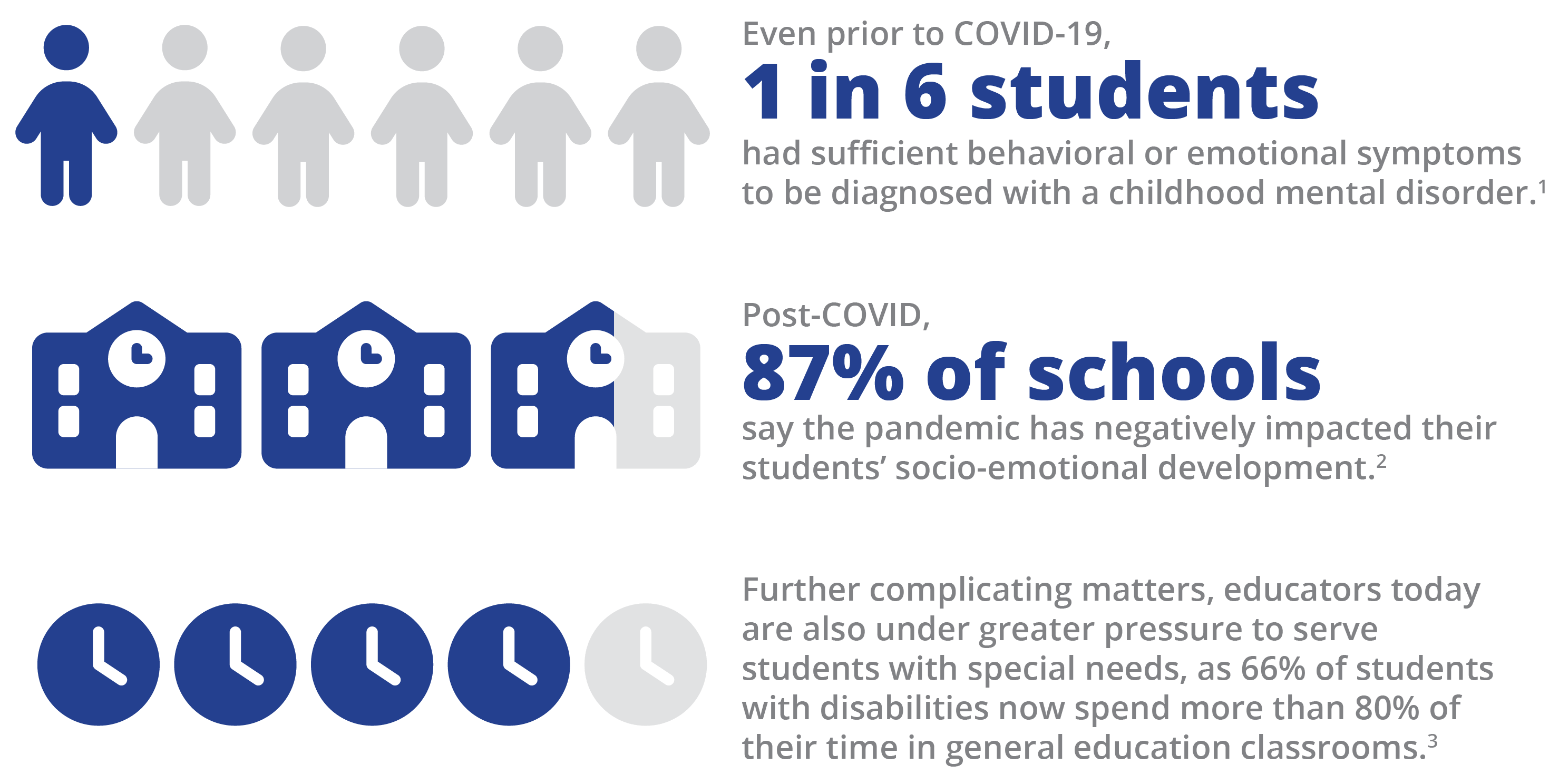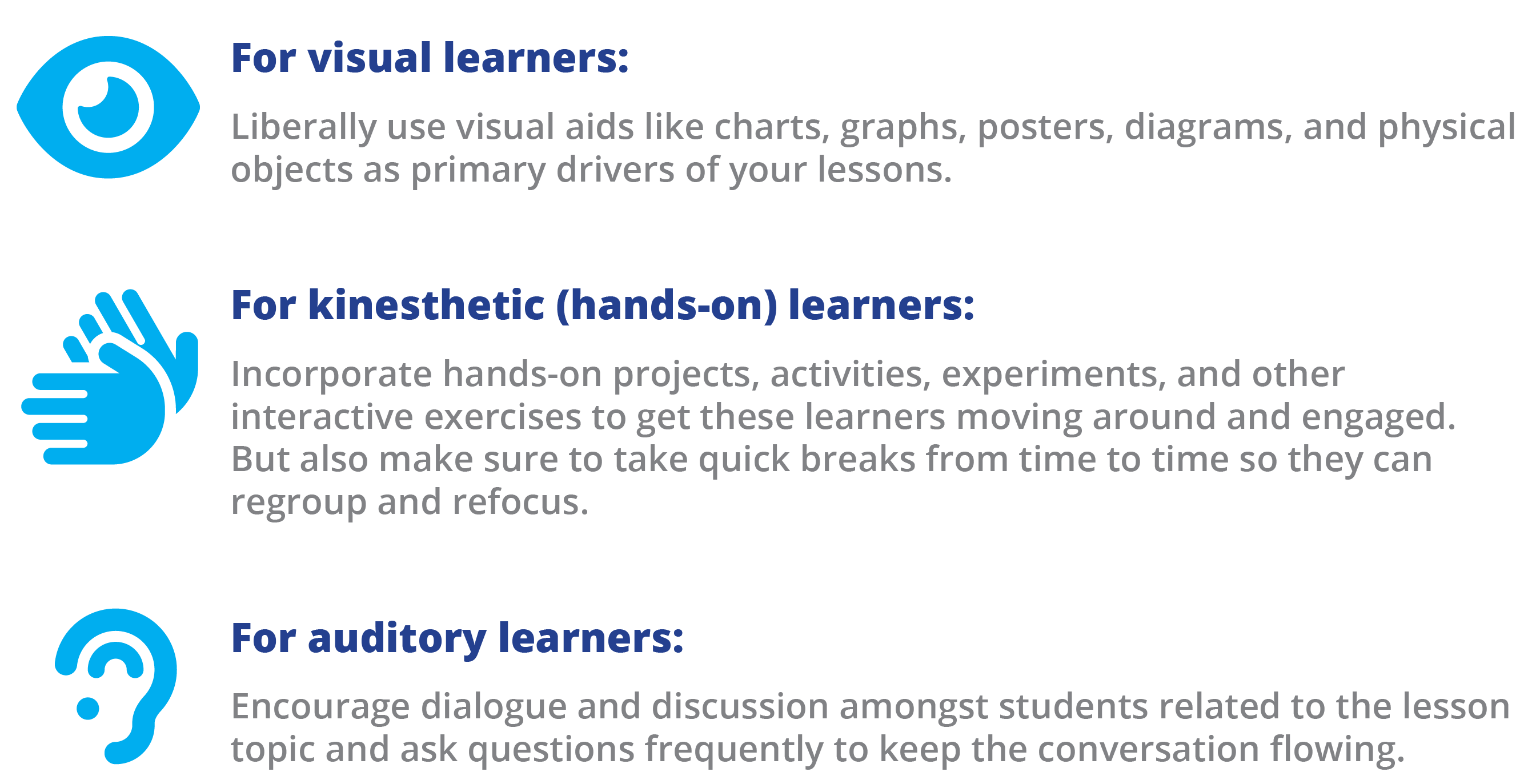Table of Contents
Educators have what seems to be an endless list of responsibilities and tasks, but one stands out among them all–supporting all students regardless of their learning differences. This fundamental goal among educators falls under the umbrella of classroom management, a term that encompasses actions an instructor takes to create a positive classroom learning environment that sets all students up for success.
The classroom has been facing numerous non-academic obstacles, that can hinder both student and educator success. Factors such as behavioral challenges, emotional disorders, and low student engagement directly affect learning, and classroom management is a strategy that can reverse those trends. In this article, we’ll take a closer look at classroom management, effective approaches toward it, best practices to use, and more.

What is classroom management?
Before we define classroom management, it’s important to understand why it’s even needed in the first place.
While these challenges are well-known, only 17% of general education teachers surveyed say they feel “very well prepared” to teach children with mild to moderate disabilities4—and 3 in 5 principals say inadequate training in classroom management hampers efforts to address student behavioral issues.5 As educators can attest, these issues often result in a challenging classroom environment. Not only is this bad for students, but it also can have a negative impact on educator retention rates, with many teachers citing behavioral issues in the classroom as a major contributor to burnout.6 While these challenges are significant, proven classroom management strategies exist that can make a real difference today—and down the road.
Effective classroom management involves strategies about organization, structure, and instruction that support students by creating a safe and positive learning environment. Within this environment, instructors can:
- Cultivate a structured, organized environment where students are better able to focus on learning
- Minimize disruption of learning
- Effectively support academic, social, and emotional learning
- Establish trust between instructor and students as well as between students and other students
- Encourage attention, engagement, and motivation and engagement
It bears repeating: Creating a safe and positive classroom environment is critical for students’ social, emotional, and academic success. By proactively and explicitly building a culture of high expectations, respect, and shared values, educators can set the tone for a collaborative classroom.
What are some effective approaches to classroom management?
Perhaps the most effective and powerful approach to classroom management is holistic professional development. The reality is that some educators were never trained in classroom management strategies; “traditional” teacher training tended to focus mainly on curriculum and content. However, with the right approaches, educators can uncover techniques and best practices for student engagement, proven methodologies to enhance executive function and resilience, and effective approaches to assisting students struggling with behavioral issues.
- Seek coaching: There is no overstating how powerful a tool job-embedded coaching is in helping teachers implement classroom strategies in near real-time. Job-embedded coaching can offer immediate support with day-to-day classroom challenges. Coaching and educating teachers on how to effectively manage their classrooms, while the teacher is actually instructing, can lead to more positive, inclusive environments where all students can learn—and where educators spend less time on discipline and more time on teaching.
- Proactively interact: When teachers consistently interact with students—through chatting with them, greeting them, making eye contact, encouraging discussion during lessons, and asking questions—they establish the foundation of a relationship with students that makes it less likely for classroom disruptions and behavioral issues to arise.
- Making classroom guidelines and expectations explicitly clear: Right from the start, instructors should be very clear and specific as to what they expect from students in their classroom—and that includes any consequences of violating these guidelines and expectations.
- Acting as you expect students to act: Respect is a two-way street, and when you demonstrate your respect for students and treat them as you’d want to be treated, they’re much more likely to reciprocate.
- Encouraging engagement: Some students are shy and quiet, while others may simply be apathetic to school. Either way, getting students engaged is critical. Some methods to encourage engagement include:
- Grading class participation
- Flipping the classroom and having students read a lesson ahead of class so they can participate in classroom work related to the lesson
- Making seemingly “minor” assignments count as graded work
- Showing you value a student’s response by encouraging elaboration and discussion around it
- Calling on students by name
- Being excited and enthusiastic about learning
By using these approaches and techniques in the classroom, educators put themselves in better position to engage students and establish a positive environment that is conducive to learning.
How can teachers accommodate different learners in the classroom?
As classrooms grow increasingly diverse, it’s incumbent upon educators to adjust classroom management and instruction accordingly. With average class sizes comfortably over 20 students, it’s inevitable that teachers will face the challenge of how to accommodate and effectively communicate with different types of learners. And it is a formidable challenge. Visual learners process information differently than auditory learners who process information differently than kinesthetic learners. So it’s up to each instructor to consider all of those learning styles when formulating lesson plans and to make their classroom as inclusive as possible for all students. Here are a few ways to do so:

To effectively reach the entire class, it will likely require instructors to dip into strategies from each learning style to create a hybrid-like method of instruction. Visual and kinesthetic learners may tune out auditory-focused lessons, while auditory learners may not follow the visual lessons. But by incorporating a blend of each learning style, teachers should be able to engage the entire class and instruct effectively.
How can educators continue to stay updated on best practices in a changing educational landscape?
As the education industry continues to change and evolve, it’s more important than ever for educators to stay in tune with and on top of new trends and best practices. There are a few ways to accomplish this goal:
- Join education-focused online or social media communities.
- Subscribe to industry emails, journals, and newsletters.
- Spend time reading and doing independent research.
The most important and effective way, however, to keep up with classroom best practices is through consistent professional development. Professional learning can take on a variety of shapes and sizes, but it’s critical that school leaders invest in their educators by making classroom management professional development part of a teacher’s job description.
When you consider the statistics that two-thirds of students with disabilities now spend more than 80% of their time in general education classrooms and that only 1 in 6 general education teachers say they feel “very well prepared” to teach children with mild to moderate disabilities, it’s obvious a disconnect exists regarding what type of professional learning is being provided. In this specific scenario, teachers obviously want and need to learn how to not only make their classroom inclusive to students with disabilities but to effectively teach those students as well. For situations like these, teachers would benefit from special education and classroom management professional development—and, ultimately, the students would benefit as well.
High-quality, consistent professional development—whether it’s online, in a workshop, or in the classroom—is the key to classroom management success.
How Catapult Learning can help
Adopting a balanced, holistic approach to professional development that encompasses classroom management, instructional excellence, and leadership development empowers educators to meet and overcome the diverse challenges they face. This integrated approach fortifies learning environments and offers vital support for educators, providing a robust and efficacious pathway to enhanced student outcomes.
That is Catapult Learning’s approach.
To be truly effective, we believe that optimal teaching and learning in classrooms, and beyond, can take place only when three critical areas are addressed in an integrated way:
- Eliminating non-academic hurdles
- Enhancing teaching excellence
- Cultivating leadership for meaningful change
Specific to classroom management, Catapult Learning firmly believes that coaching educators on how to effectively manage classrooms can lead to more positive and inclusive environments where all students can learn—and where less time is spent on discipline and more time is spent teaching. we empower educators by:
- Strengthening behavioral support. Our aim is to help educators provide students with the tools to improve behavior, set and achieve goals, and make smart decisions—all of which lead to a positive learning environment built on a culture of high expectations, respect, and shared values.
- Improving classroom management practices. We help educators establish a classroom environment conducive to teaching students with a range of learning differences in a general education setting. Additionally, Catapult’s PD experts can help clarify the difference between modifications and accommodations for students with unique needs.
- Developing student function and resilience. Catapult can help instructors assist their students in identifying and developing executive function skills both in school at home as well as foster students’ resiliency skills through an approach that puts students at the center of learning by honoring, challenging, and supporting them.
Catapult Learning will work with your schools to tailor and execute a professional learning implementation plan aligned to each school’s specific needs and timing through a combination of:
- Job-Embedded Coaching. With more than 250 coaching experts in the field (the most in the industry), Catapult’s job-embedded coaching delivers one-on-one and team coaching that supports educators in the moment.
- Instructor-Led Workshops and Institutes. In-person, virtually, or a combination of both, our professional forums bring discoveries and research-based practices to school leaders and educators.
- PDNow On-Demand Platform. PDNow offers 24/7 anytime, anywhere access to relevant professional learning content and resources that extend the value of training.
For more information on how Catapult Learning’s holistic professional development can help with classroom management in your schools, visit https://catapultlearning.com/programs/professional-development/ today.
Sources
1 https://www.nais.org/learn/independent-ideas/october-2022/teacher-retention-a-teachers-perspective-on-keeping-colleagues/
2 https://nces.ed.gov/whatsnew/press_releases/07_06_2022.asp\
3 https://nces.ed.gov/fastfacts/display.asp?id=59
4 https://www.ncld.org/wp-content/uploads/2019/05/Forward-Together_NCLD-report.pdf
5 https://www.brookings.edu/blog/brown-center-chalkboard/2023/06/08/survey-principals-say-they-need-better-trained-teachersand-more-resources-to-address-student-misbehavior/
6 https://sanjosespotlight.com/silicon-valley-santa-clara-county-san-jose-teachers-educators-burned-out-by-unruly-student-behavior/ or UCLA study primary source at https://transformschools.ucla.edu/wp-content/uploads/2022/10/Voices-from-the-ClassroomDeveloping-a-Strategy-for-Teacher-Retention-and-Recruitment.pdf
